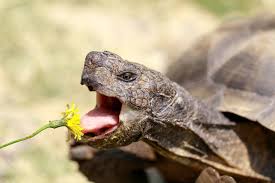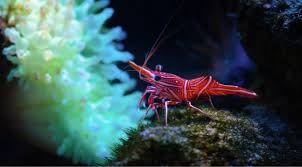Aquatic Organisms: Invertebrates include all animals without a backbone. They are far more diverse and abundant than vertebrates, and many groups of invertebrates are found in fresh water ecosystems.
Invertebrates living on or in aquatic sediments are termed benthic invertebrates. Benthic invertebrate communities including measurements of population abundance and diversity are often used as indicators of aquatic ecosystem health.
Some of the more common benthic invertebrates are described below;
Worms: These are an informal collection of three major groups, including flatworms (Platyhelminthes), roundworms (nematodes), and segmented worms (annelids).
Flatworms include a major group that is free-living and often predatory (Turbellaria), and two major groups, Trematoda (flukes) and Cestoda (tapeworms), that have adult stages that are entirely parasitic, although their intermediate stages may be aquatic.
Some flukes and tapeworms are important parasites of human beings, often causing serious illnesses.
Molluscs: These include the familiar groups of snails (gastropods) and bivalves (clams and mussels). A hard shell encloses, wholly or in part, the bodies of most molluscs.
Snails feed by scraping biofilm from surfaces, collecting organic matter deposited in the sediment, consuming macrophytes, or feeding on decaying animals. Bivalves have gills, which they use both for breathing and for collecting small particles from the water.
Insects: These are the most diverse group of animals on earth. Most insects are terrestrial, while some have life stages that are aquatic (e.g., dragonflies and mosquitoes).
A few insects are entirely aquatic (e.g., aquatic beetles). While most aquatic insects live on or near the bottom of waterbodies, though some (such as the larvae of the phantom midge Chaoborus) can swim into the water column.
Most aquatic insects have gills and need water with dissolved oxygen while others, such as mosquito larvae, breathe through the surface film of still waters. Insects may be herbivores, carnivores, or detritivores.
Stream and river insects are crucial in the processing of organic matter. Some scrape biofilm, others shred larger leaves into smaller particles, while still others filter or collect these smaller particles. This chain of processing reduces large organic matter to successively smaller and smaller particles.
Zooplankton are aquatic animals that cannot swim against water currents, typically because they are too small to do so.
However, many zooplankton can swim significant distances in fairly still waters. Because they cannot swim against currents, they are more important in lakes than in running water, as running water usually carries them downstream faster than they can reproduce.
However, they can be abundant in large slow flowing rivers. Zooplankton are heterotrophic and are significant sources of energy and nutrients to carnivorous invertebrates and some vertebrates.
Aquatic Organisms: Vertebrates
All animals that have a backbone are called vertebrates. They are generally the most familiar of animals, and include fish, amphibians, reptiles, mammals, and birds.
i. Fish
Fish display every major feeding type: herbivorous fish feed onperiphyton or macrophytes, or may even filter phytoplankton from the water; carnivorous fish feed on molluscs, worms, insects, zooplankton, and other fish; omnivorous fish may feed on specific types of prey, or feed indiscriminately on nearly anything they can consume.
Due to this diversity in modes of feeding, different fish can occupy very different places in a food web.
As with feeding behaviour, some fish occupy very specific habitats while others can be found in a wide variety of lakes and rivers.
The distribution of fish can be influenced by a large number of factors, including oxygen concentration, temperature, the presence of macrophytes, the availability of suitable substrate for spawning, and current speed (in streams and rivers).
Changes in fish habitat (such as reduction of flooding due to damming) can favour some types of fish, and disadvantage others.
ii. Amphibians
These are cold-blooded vertebrates that generally live out their juvenile stages in aquatic environments and then move onto land as adults; however, some amphibians remain aquatic for their entire life. The most familiar amphibians are frogs, toads, and salamanders.
When amphibians transform from juvenile to adult, they often undergo a significant change in diet. Tadpoles, for example, are usually herbivorous, consuming periphyton or macrophytes, but adult frogs are carnivorous, feeding on animals such as insects, worms, snails, or nearly any other animal that they are capable of swallowing whole.
Read Also : Aquatic Organisms and their Groups in Fresh Water Ecosystems
Frog tadpoles are an important food source for some fish. In addition, aquatic birds and some reptiles (such as aquatic snakes) prey upon the adults.
Due to the dependence of amphibians on water and warmer temperatures, they are most active in the summer and often hibernate on land in the winter.
iii. Reptiles

Unlike amphibians, reptiles are largely a terrestrial group of animals. In the oil sands region, they include turtles and snakes. As they are also cold blooded, reptiles depend on environmental conditions to regulate their body temperature.
Reptiles lay eggs on land and it must be warm enough for eggs to hatch and grow.
Reptiles are more active in the summer months when temperatures permit and they often hibernate during the winter.
Reptiles have a thick skin that allows them to tolerate dry conditions and are not as dependent on water as amphibians are. However, some reptiles spend large amounts of time in water and feed there. Most reptiles, including those that feed in fresh water, are predatory and capture a variety of prey.
Read Also : Why John Deere Tractors Are Best For Driving Agricultural Productivity

